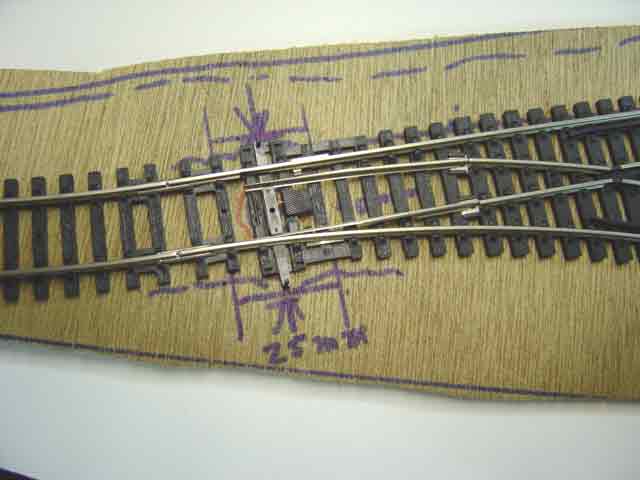--more--

Likewise, again assuming that the supply of traction current originates from the left of the point, the straight side would receive no traction current if the point blades were thrown to provide a curved path.
This property of Hornby points, that is, the property of providing traction current only to the path to which the point blades are switched, turns out to be extremely useful to the layout designer.
Changing the subject for a moment, the picture happens to show a feature of Hornby points that should be kept in mind. Observe the two long sleepers on either side of the sliding arm that joins the point blades. Each of these long sleepers has a small slot at each end, providing a total of four slots. These slots can be used when installing a subsurface point motor, a topic which is later covered in detail in these pages.
Go to top of page